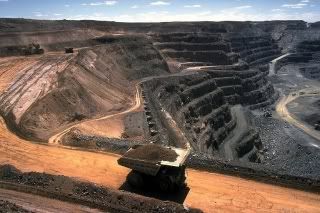
There is a new stream at Guy Cove in Kentucky's Robinson Forest, and it could have a significant impact on the future of environmental law with regard to surface-mining. Bill Estep, Buried Streams, Ripple of Hope, Lexington Herald-Leader, Jan. 31, 2010, available at http://www/.
kentucky.com/latest_news/
story/1118658.html#. When coal companies remove rock for surface mining, the "spoil" (extra rock and dirt) that cannot be placed back in the mined area because it swells, is placed into fills in hollows around the site and compacted for stability. Id. This process often results in covering up parts of streams, to the extent that a 2003 federal study found that an estimated 730 miles of streams in Eastern Kentucky were wiped out by surface-mining activities. Id. This is likely an underestimate, as Greg Pond, formerly a biologist with the Kentucky Division of Water who is currently employed at the Environmental Protection Agency ("EPA"), explains in a 2004 research paper that the estimate in the federal study addressed only a particular class of stream, and it is likely that surface-mining has in fact buried hundreds more miles of headwater areas in Kentucky. Gregory Pond, Effects of Surface Mining and Residential Land Use on headwater Stream Biotic Integrity in the Eastern Kentucky Coalfield Region, http://www.water.ky.gov/NR/rdonlyres/ED76CE4E-F46A-4509-8937-1A5DA40F3838/0/coal_mining1.pdf (last visited Feb. 2, 2010). The coal industry has taken a different approach entirely as to what constitutes a stream. As explained in the Lexington Herald-Leader, "[the coal industry says it would be impossible to mine coal without creating fills. To many associated with the industry, the areas high on the side of a hill where water begins to collect are not streams at all, but merely drainage ditches that only flow with water when it rains or when snow melts." Bill Estep, Buried Streams, Ripple of Hope, Lexington Herald-Leader, Jan. 31, 2010, available at http://www.kentucky.com/latest_news/
story/1118658.html#.
University of Kentucky researchers built a new stream atop the fill at Guy Cove, and planted vegetation and trees. Id. The result is a promising alternative to the current method of filling that, while in its early stages, appears, to have provided for high quality water in a stable stream as a method of reclaiming watersheds. Id. The new research development is particularly interesting against the backdrop of the current legal climate with regard to stream reclamation. The EPA has stalled dozens of permit applications in Appalachia, including Eastern Kentucky, for further review, for concerns including restoration of stream functions after mining. Id.






